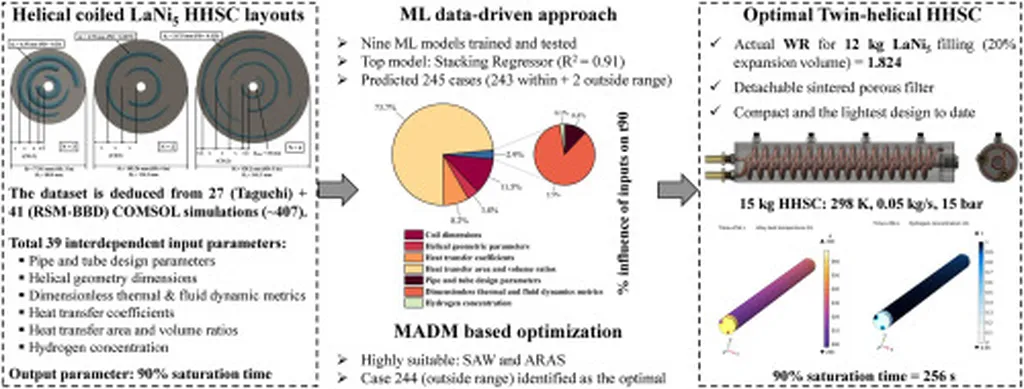In the realm of engineering and design, the complexities of creating and manufacturing developable helical surfaces—particularly those with variable pitch—have long posed significant challenges. However, a recent study published in the journal “Machinery & Energetics” (which translates to “Machines and Energy”) offers a groundbreaking solution that could revolutionize industries ranging from agriculture to energy production.
At the heart of this research is A. Nesvidomin, whose work focuses on developing an algorithm to design helical surfaces with variable pitch. By leveraging the principles of differential geometry and advanced computational tools like MatLab, Nesvidomin has made significant strides in simplifying the design and manufacturing processes for these intricate surfaces.
The study addresses a critical gap in engineering practice, where the lack of consideration for developable helical surfaces complicates their application. “The task was to draw a set of rectilinear surface components through this spiral line with a vertical axis, provided that it was a developable surface,” Nesvidomin explains. This involves ensuring that the lines are inclined at a constant angle to the horizontal plane, creating a surface of equal inclination.
One of the key findings of the research is that a set of reamer surfaces with the same slope of the constituent parts, but with different specified angles, can be drawn through a given helical line. This discovery has profound implications for the manufacturing of screws and other helical components used in various industries. “It has been established that it is easy to obtain a surface compartment bounded by two coaxial cylinders, one of which has a given helical line,” Nesvidomin adds.
The practical applications of this research are vast. In the energy sector, for instance, the improved technology for manufacturing screws could enhance the efficiency and durability of equipment used in oil and gas extraction, renewable energy systems, and other critical applications. The agriculture, food, and construction industries could also benefit from more precise and cost-effective manufacturing processes.
Nesvidomin’s work not only advances our understanding of developable surfaces but also paves the way for future innovations in engineering design and manufacturing. As industries continue to seek more efficient and sustainable solutions, the insights gained from this research could play a pivotal role in shaping the future of these sectors.
Published in the esteemed journal “Machinery & Energetics,” this study represents a significant step forward in the field of engineering, offering a glimpse into the potential of advanced computational tools and geometric principles to solve real-world problems. As the energy sector and other industries continue to evolve, the impact of Nesvidomin’s research is likely to be felt for years to come.

